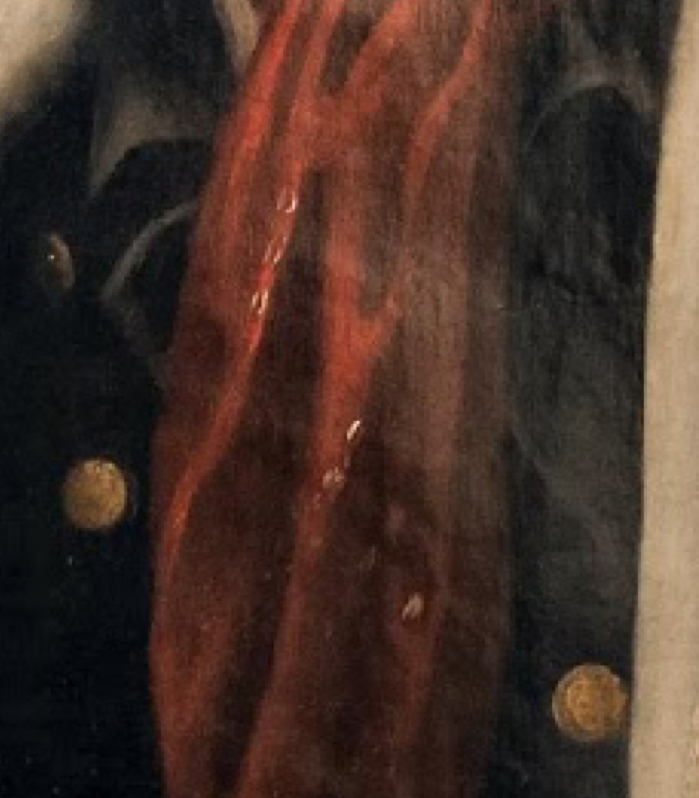Of those captured by Indians in the 18th century, none was better adapted to life on the frontier than James Smith. Captured at the age of 18 while working on a Pennsylvania spur of the Braddock Road, his subsequent adoption by Kahnawake Mohawks set in motion a chain of events that would influence the rest of his life. His portrait, on loan from Northern Kentucky University for the Fort Pitt Museum’s Captured by Indians exhibition, offers a rare glimpse of the most famous frontiersman you’ve never heard of.


Biographical Sketch of James Smith
Upon his escape from captivity in 1759, Smith lived out the remainder of the French & Indian War, or “Braddock’s war,” as he styled it, in relative peace. When Pontiac’s Uprising broke out in the summer of 1763, however, he was soon placed in command of a band of frontier rangers known as the Black Boys, which he trained and equipped in the manner of Indian warriors.
“As we enlisted our men, we dressed them uniformly in the Indian manner, with breech-cloths, leggins, mockesons, and green shrouds, which we wore in the same manner that the Indians do… In place of hats we wore red handkerchiefs, and painted our faces red and black, like Indian warriors. I taught them the Indian discipline, as I knew no other at that time…”
After serving as a lieutenant on Henry Bouquet’s 1764 expedition to reclaim all the English captives taken during the previous war, Smith again returned to the Pennsylvania frontier where a new round of Indian attacks soon forced him back into public service. Enraged at the trafficking of knives, tomahawks, and other “warlike stores” from Pennsylvania traders to Ohio Indians, the Black Boys achieved their most infamous victory in 1765 when they attacked a packhorse train laden with trade goods bound for Fort Pitt.
Prior to the American Revolution, the restless frontiersman migrated to Western Pennsylvania, ultimately serving as a colonel in the Westmoreland County Militia. In 1799, at the age of 62, he published “An Account of the Remarkable Occurrences in the Life and Travels of Col. James Smith,” which includes a vivid and sincere depiction of life among the Indians. About the same time, the old frontiersman posed for a portrait by a now-unknown Kentucky artist.
The Portrait


In contrast to the gaunt, weathered appearance of fellow frontiersman, Daniel Boone, Smith’s round, somewhat jovial countenance gazes contentedly outward. However, it is his choice of clothing that is the most interesting element of the portrait, providing clues about his long history on the frontier.
Over a double breasted coat or jacket, Smith wears a loose beige linen frock, open at the front, with multi-colored white, blue, and yellow fringe around the edge. This garment, known as a hunting shirt, first emerged in the 1760s along the Pennsylvania/Virginia frontier. It quickly became ubiquitous among backwoodsmen. In the summer of 1775, this frontier fashion staple, often paired with matching trousers, entered the early national stage when hundreds of riflemen from the frontiers of Pennsylvania, Maryland, and Virginia marched to the aid of the colonial army laying siege to the British at Boston.

Once common on the frontier, only four 18th century hunting shirts are currently known to exist, though enough visual depictions and contemporary descriptions survive to document some common stylistic elements. One such feature was the decorative fringe often applied to the hemmed edges of the front, bottom, and cape. While at least one contemporary observer noted that the fringe was typically made from “a ravelled piece of cloth,” historian Neal Hurst notes that many later hunting shirts made use of separately-woven fringe applied to the finished garment, as the multicolored fringe on Smith’s hunting shirt suggests.

In addition to his hunting shirt, a casually tied red handkerchief, worn in place of the more typical white linen cravat, contributes to Smith’s informal appearance. Faintly visible on the ground of the fabric are small white squares indicative of the textile, bandhani, or bandanoe, as it was frequently known in early America. Derived from a Hindi word meaning “to tie,” the textile was created by meticulously tying dozens or hundreds of tiny knots on a piece of white silk, which was then dyed, creating a spotted pattern.

Imported from India and later copied by English manufactures, bandanoes were widely available on the 18th century frontier and may well be the “red handkerchiefs” with which Smith outfitted his volunteers. Later versions evolved into the colorful bandannas of the Old West, which remain popular to this day.
Like many of his contemporaries, James Smith’s captivity led him to a long and eventful career on the frontier, as the portrait painted near the end of his life attests.
Visitors to the Fort Pitt Museum can see this rare image of a frontiersman and former Indian captive on display in the Captured by Indians exhibit, which runs through May 22, 2016.
For further reading
John J. Barsotti and William Darlington, eds., “Scoouwa: James Smith’s Indian Captivity Narrative.” Columbus: Ohio Historical Society, 1978
Joseph Doddridge., “Notes on the Settlement and Indian Wars of the Western Parts of Virginia and Pennsylvania from 1763 to 1783, inclusive, together with a Review of the State of Society and Manners of the First Settlers of the Western Country.” Republished by John S. Ritenour and Wm. T. Lindsey. Pittsburgh, PA, 1912. Available online.
Neal Hurst, ‘“kind of armour, being peculiar to America:” The American Hunting Shirt,’ William and Mary Digital Archive, 2013. Available online.
Mike Burke is the exhibit specialist at the Fort Pitt Museum.

